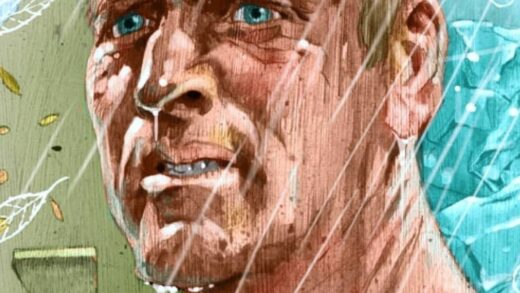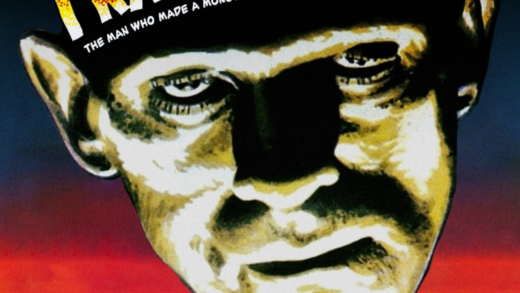Vertigo Review: Hitchcock’s Radiantly Gritty Noir
When discussing Alfred Hitchcock’s 1958 film Vertigo, audiences and critics are usually very reluctant to call it a noir film for a number of reasons.
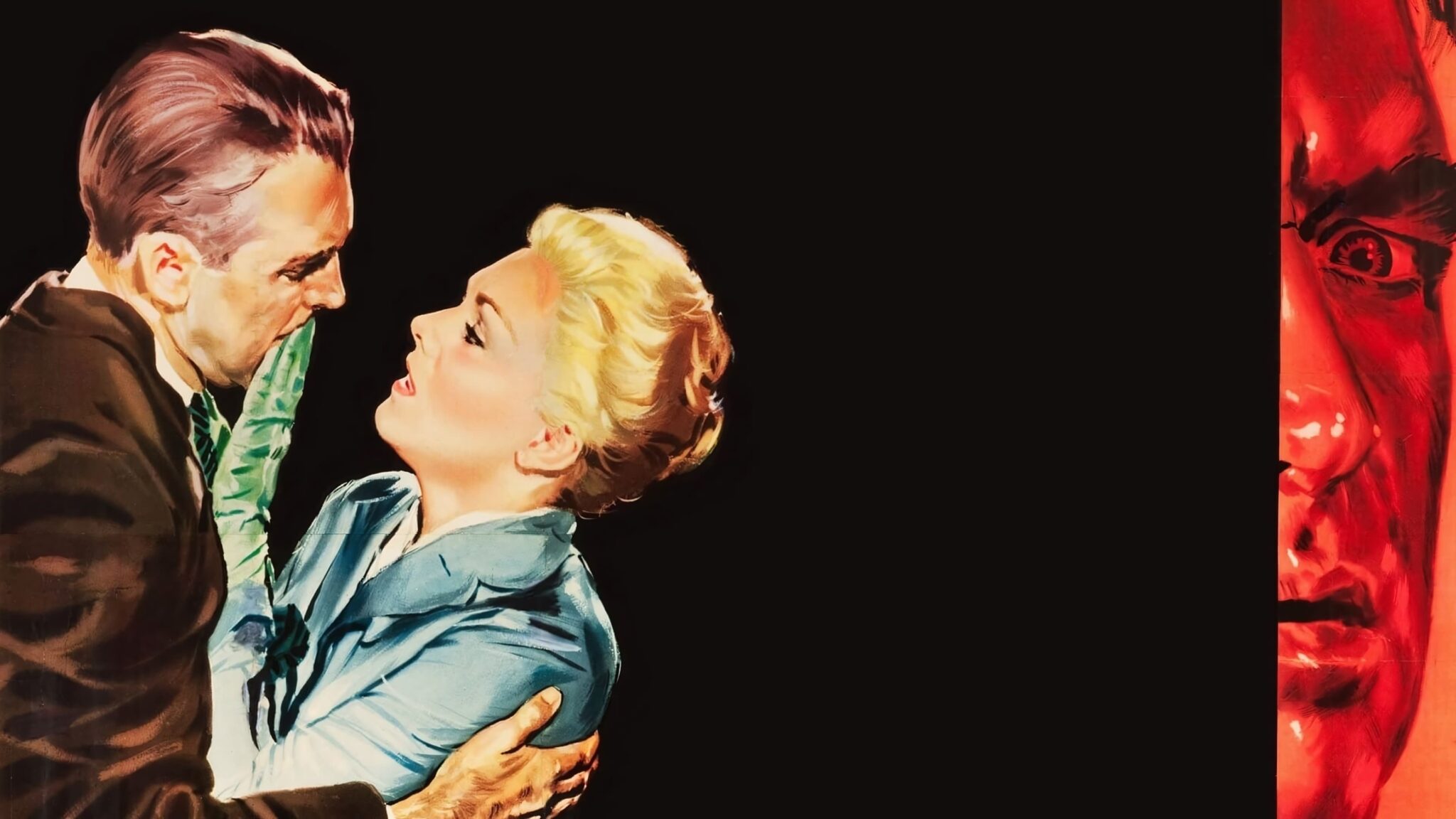
Hitchcock’s Vertigo: Noir or Not?
The first and most obvious is that it is shot in color and therefore lacks the black and white cinematography the genre is known for. The second reason is that people are hesitant to call any Alfred Hitchcock movie a film noir, for even the films of his that could directly fit into the noir cannon (Notorious, Strangers on a Train, Shadow of a Doubt…) are usually stranger than the rest of the lot…after all, Hitchcock was one of a kind and so were his movies, and they continue almost to form a genre of their own.
But look past all this technical nitpicking, and you can begin to recognize a film noir that checks every thematic requirement of the genre, admittedly replacing the black-and-white cinematography the genre endorses with radiantly colorful photography. Still, the feeling of impending doom and awaiting fatalism is conveyed just the same, if not more powerfully.
Drifting Between Mysticism and Mystery
Vertigo tells the story of John Scottie (played by James Stewart), a police detective who is forced to quit the force due to an accident where he witnessed a co-worker fall to his death, thus developing acrophobia, or acute fear of heights. After being contacted by an old acquaintance, he is forced back into detective work to investigate the daily life of a woman who has allegedly been possessed by an old spirit, taking control of her actions and attempting to end her life.
A romance blossoms between the two protagonists, leading to more concern, doubt, and a sense of responsibility and protection, which ultimately leads to a grand unraveling of the truth that completely shifts the audience’s initial expectations in perfect Hitchcock fashion.
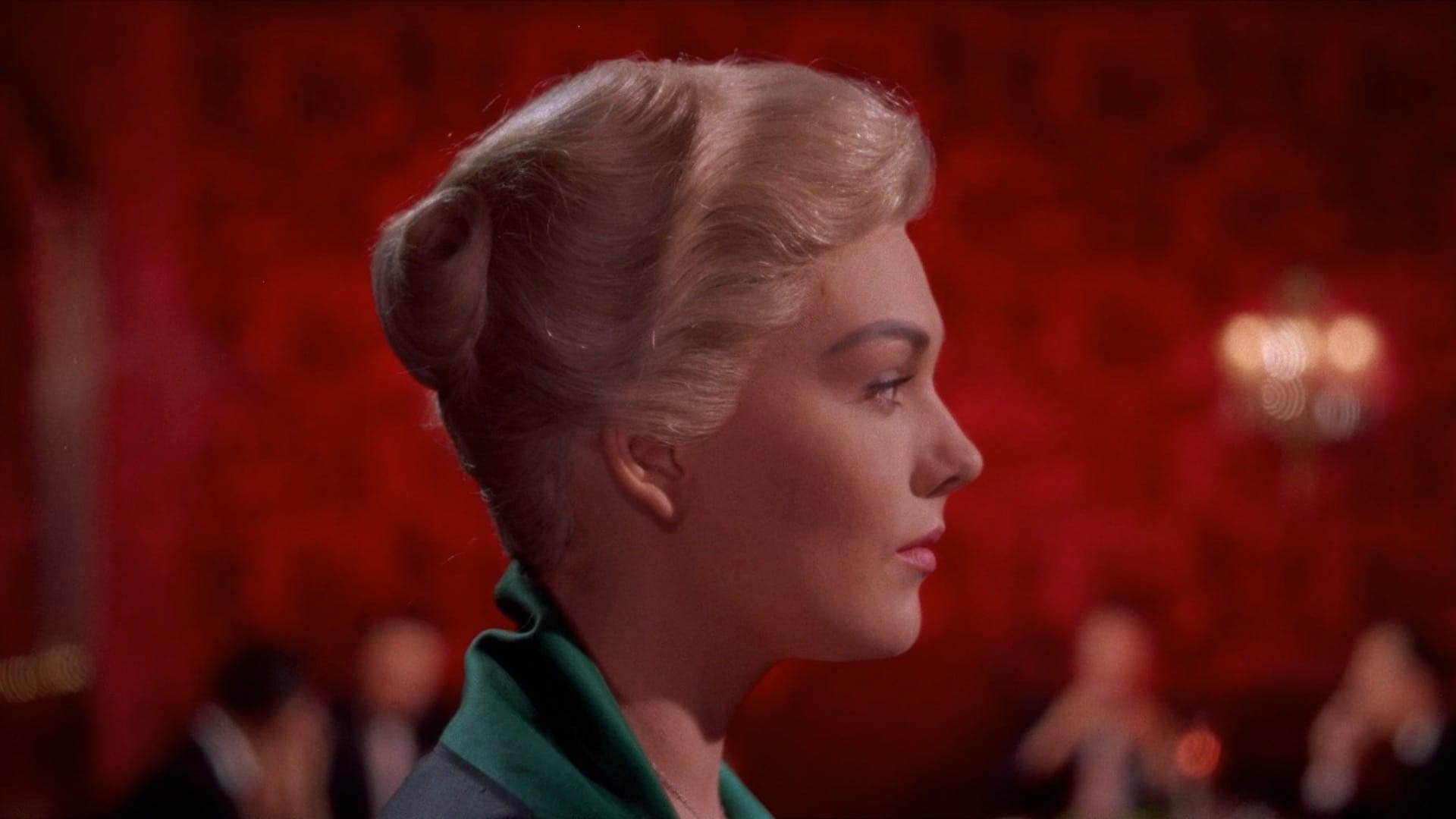
Crime, Femme Fatale, and a Redeemer: Check, Check, and Check.
As it is my habit in writing, I prefer to discuss films as art, not as political objects, even if I am perfectly aware that they are pregnant with subtle meaning.
Even though Vertigo could be interpreted as a tale of male aggression and extreme fascination, from both male characters of the film actually, I prefer to discuss its plot within noir narratives. Film noir critic and historian Eddie Muller always says that noir films are about people who know they are doing the wrong thing, but keep on doing it all the same, which concludes with their demise, and that is a perfect description of Vertigo.
Scottie knows before taking a job that is already riddled with unanswerable questions and suspicions that it is the wrong decision to make, and doubts if the whole tale has any truth to it in the first place— after all, the dead don’t possess the living much anymore. Yet he takes the job against his better judgment and against the unspoken will of Midge, who in this film represents a female figure that is very present in film noir: the redeemer.
His quest revolves around and leads him to yet another female figure in noir narratives, which you can find in almost every picture from this genre: the femme fatale. Unlike the redeemer, a woman with homely, perfectly innocent manners, a character who plays the protective role of a mother, the femme fatale seeks not necessarily to destroy the protagonist, even unconsciously… the truth is, she doesn’t know what she seeks, and this mysterious quest for God-knows-what, coupled with her charms and alluring nature is a deadly combo that always ends up getting every noir protagonist.
Scottie is no exception, and as he falls more deeply in love with Madeline, he goes through an emotional whirlwind, experiencing everything from tender passion and sense of protection, to guilt, anger, and what could be dubbed a desire for revenge.
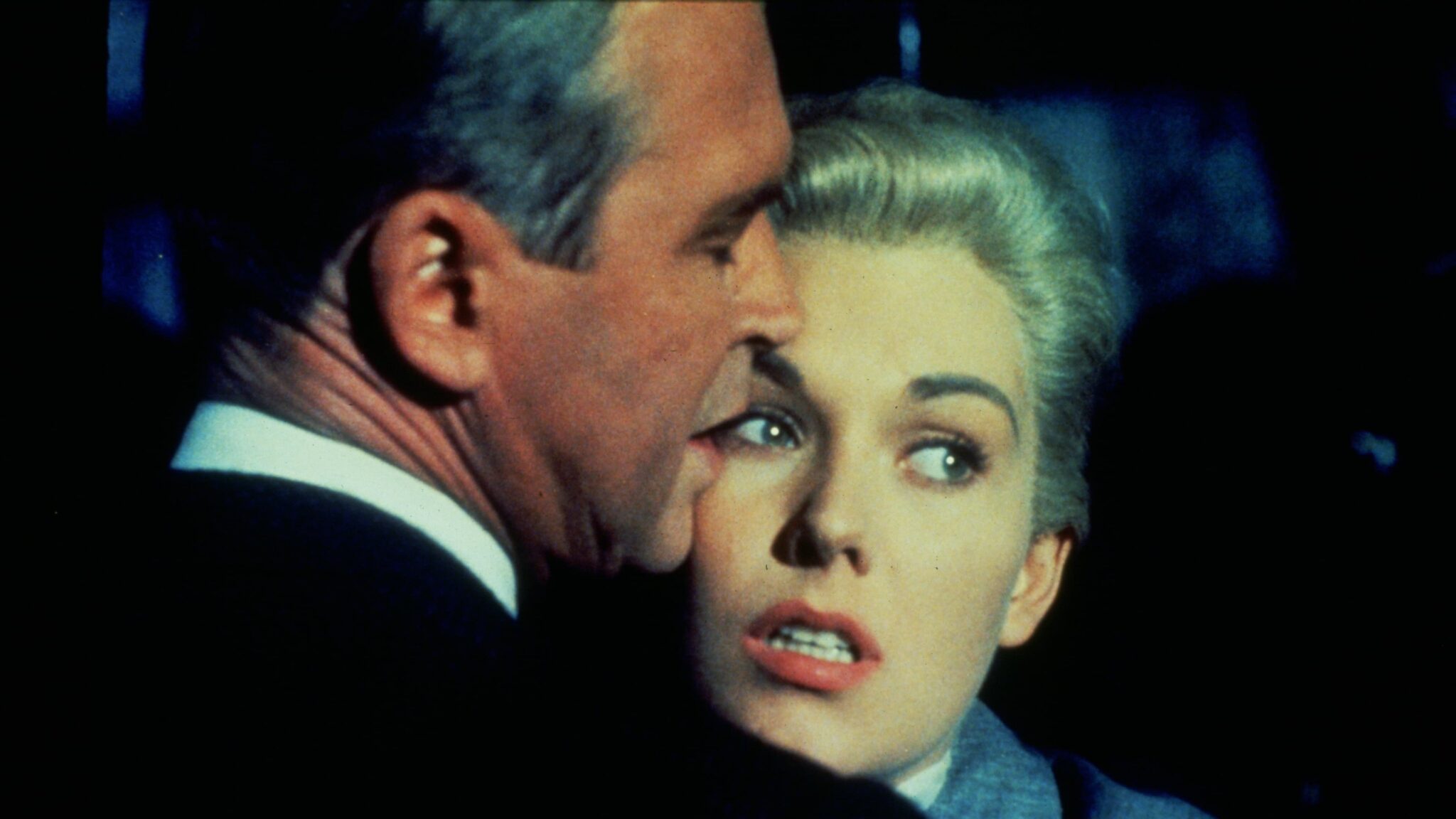
Incredible Score, Incredible Camerawork
Alfred Hitchcock is not called the master of suspense for no reason, and this film is the best proof of his directing talents. But from a technical perspective, the film may be even more impressive. Bernard Herrmann’s score for Vertigo is some of the best work he has ever done alongside his soundtracks for Psycho, Taxi Driver, and Citizen Kane. It is entrancing, mesmerizing, and extremely exciting.
Yet cinematography is where Vertigo delivers its strongest punch. The opening sequence cannot be called anything except revolutionary. The frightfully open eye against the red background and the twirling cyclone as the credits read on screen creates a hypnotic, captivating effect, and then the film directly cuts to a chase that briefly concludes with a literal cliffhanger, introducing the world to an effect that will get its name from this iconic movie: The Vertigo Effect, in which the camera moves away from an object while simultaneously zooming in to create a dizzying effect.
Throughout its 128mins runtime, the film continues to prove its status as a prime example of not only masterful camerawork, but also genius set and costume design, sound and video editing, and virtuosic acting and performance.
Even though the name perfectly demands black and white cinematography, the film noir movement has produced several masterpieces that were shot in color and still conveyed the same messages that their black and white counterparts did, again proving the noir’s large range. Vertigo is a beautiful example of these few pictures, a film that has enchanted audiences around the world for 66 years and kept ‘em coming back for more vertiginous excitement.
- February 5, 2024
